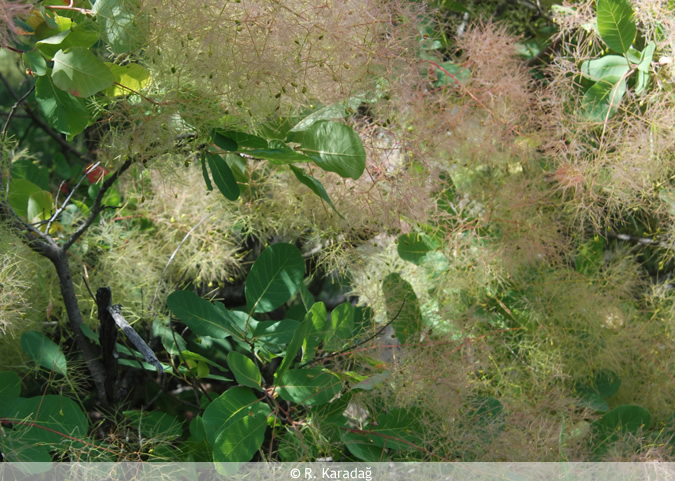Dyer's sumac is a bush that can grow to 18 feet in height and has oval, long-stemmed leaves. The large clusters of fruit in late summer are especially noticeable, giving rise to its common name in German, Perückenstrauch, wig tree. The clusters can be a foot long and consist of numerous featherlike fruit stems, only a few of which, however, actually bear small berries. Distribution: Canary Islands, Mediterranean area, Asia Minor, the Caucasus, Iran to Afghanistan . It prefers rocky chalk soil in coastal areas. Material used for dyeing: Heart-wood.Historical Data
Pliny the Elder recorded that dyer's sumac was used in antiquity to dye leather. The smoke tree venation sumac, the source of the dye called young fustic, is native to southern Europe, the Middle East, India and China. This shrublike tree has been known since the time of the Roman Empire. Young fustic was used in Europe during the Middle Ages and was still of great importance in the economy of poor Provincial villages early last century. However, young fustic as a dye is not readily available today. Fisetin, the main dye ingredient of young fustic or dyer's sumach, was found in an Ottoman court carpet in the Museum of Turkish and Islamic Art in Istanbul. Into the 19th century in Europe , its heartwood was much used as a source of dyestuffs for yellow, especially for silk, often together with other dyestuffs, as the yellow from dyer's sumac by itself is not lightfast. During World War I, the Turkish army had uniforms and tents dyed with it, whereby both leaves and shoots were used, which contain tannins and produce a brown dye. In Turkish village rugs from the 19th century, the characteristic dyestuffs fisetin sulfurein, sulfuretin have been identified. Its use has been found in Turkey everywhere the plant grows. Red-leafed varieties are favored as decorative plants in Europe and America.

